10 MLB stars you forgot were Philadelphia Phillies

You probably forgot that these 10 MLB players were once Philadelphia Phillies
The Philadelphia Phillies have been around longer than most MLB teams, but they’ve certainly not experienced as much success as they should have over their near-century-and-a-half. The franchise is almost 20 years older than the New York Yankees, who have 27 championships; the Phillies have two.
The root of many of their struggles is roster construction and of course, money. The Phillies became famous over the years for trading players for cash and then watching those players thrive elsewhere. They’ve also made some plain old bad signings; it’s a franchise far from perfection.
One of the side effects of being a poorly-run franchise is that a lot of great players passed through so briefly you may never have even known they were here.
Here are 10 MLB players you probably forgot (or never knew) were Phillies…
1. Fergie Jenkins, Phillies
Trading Fergie Jenkins to the Cubs will forever be one of the biggest blunders in Phillies history.
The rookie had only pitched in eight games for the Phillies between 1965-66 before the Phillies traded him to the Cubs. He went on to lead the NL and MLB in starts and complete games several times, make three All-Star appearances, and win a Cy Young award.
Jenkins also pitched for the Rangers, Red Sox, and Cubs again, before retiring. The beloved pitcher became the first Canadian player to be inducted into the Baseball Hall of Fame in 1991.
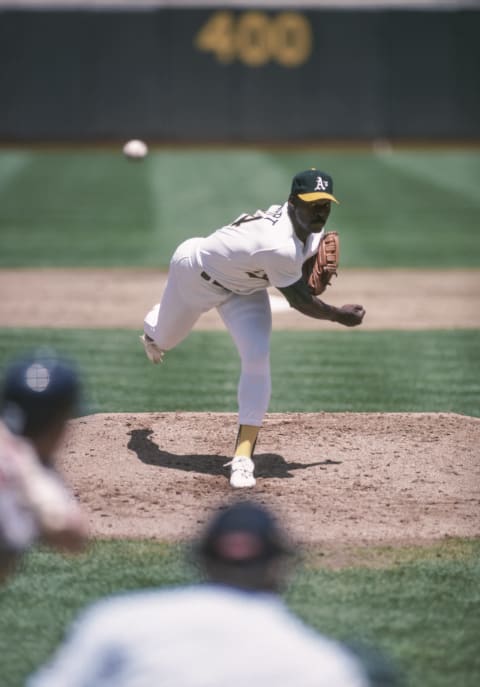
2. Dave Stewart, 1985-86 Phillies
The Texas Rangers traded Dave Stewart to the Phillies during the 1985 season, and he appeared in four games for the team. The following season, he made eight appearances for the club before they released him on May 9, 1986.
The move immediately backfired on the Phillies. Stewart signed on with the Oakland A’s and after a rocky beginning, became a full-time starting pitcher for the first time in his career and shined in green and gold. Between 1987-90, he led MLB in starts and innings pitched twice, and finished in the top-four for AL Cy Young each season. In 1990, he threw a no-hitter.
“Smoke” finished his career with three World Series rings between the A’s and Blue Jays, the 1989 World Series MVP award, two ALCS MVPs, a Roberto Clemente Award, and induction into the A’s Hall of Fame.
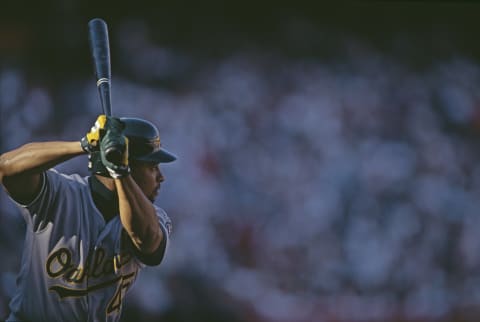
3. Danny Tartabull, 1997 Phillies
Danny Tartabull‘s 14-year career ended with the Phillies, not with a bang, but a whimper.
The former Seattle Mariners and Kansas City Royals slugger had finished fifth in Rookie of the Year voting in 1986, and 17th in MVP voting in 1987, when he hit a career-high 34 home runs.
Tartabull then played for the New York Yankees, Oakland A’s (whom his father also played for), and Chicago White Sox. But by 1997, he played exactly three games in red pinstripes and went hitless in 11 plate appearances before closing the book on his career.
Unfortunately, Tartabull became notorious for something other than baseball and tv cameos, when he was named the “top deadbeat dad in Los Angeles” for not paying child support. He avoided arrest for five years but was finally taken into custody in 2017.
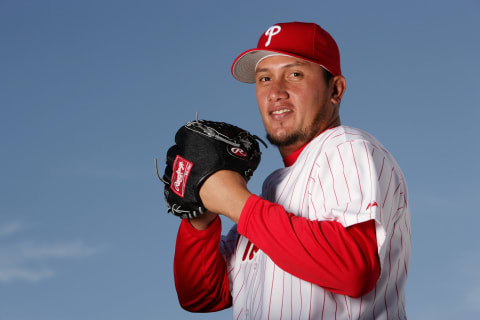
4. Freddy García, 2007 Phillies
Freddy García was a two-time All-Star, ERA title-holder, and won a World Series ring, but none of that happened with the Phillies.
García landed with the Phillies in 2007 via trade from the Chicago White Sox. In return, the Phillies sent Gavin Floyd and Gio Gonzalez to Chi-town.
While the Phils would go on to win their first of five consecutive division titles that season, the righty only made 11 starts for the club, and posted a career-worst 5.90 ERA. By June, he was on what was then known as the Disabled List, and by August, he’d had shoulder surgery.
The only upside of this trade was that the trade turned out so terribly that then-White Sox GM Ken Williams actually felt guilty enough to make another trade with the Phillies. At that year’s trade deadline, he sent Tadahito Iguchi to Philadelphia. He hit .304/.361/.442 with a .803 OPS in 45 games for the Phillies, filling in for an injured Chase Utley.
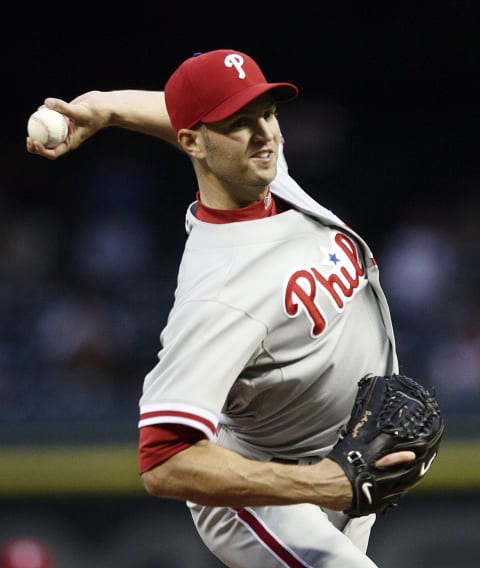
5. J. A. Happ, 2007-2010 Phillies
J.A. Happ has played for eight teams (including two stints with the Blue Jays) so far in his career, so don’t feel bad if you forgot where it all began for him.
The Phillies drafted Happ in the third round of the 2004 draft. By 2006, he was named their eighth-best prospect. He made his debut on June 30, 2007, got shelled by the New York Mets, and was sent back down to the minors.
After beginning the 2008 season with the new Triple-A affiliate Lehigh Valley IronPigs, Happ returned to the bigs on July 4. He was sent up and down a few times throughout the season, and was added to the team when the rosters expanded in September. Over eight regular-season games (four starts) that year, he posted a 3.69 ERA. He also pitched in the NLCS, helping the Phillies to their second championship.
The following season, Happ became a full-time big-leaguer, pitching in 35 games, including 23 starts. He compiled a 2.93 ERA over 166 innings.
In 2010, Happ was off to a strong start when the Phillies traded him and minor leaguers Anthony Gose and Jonathan Villar to the Houston Astros for Roy Oswalt.
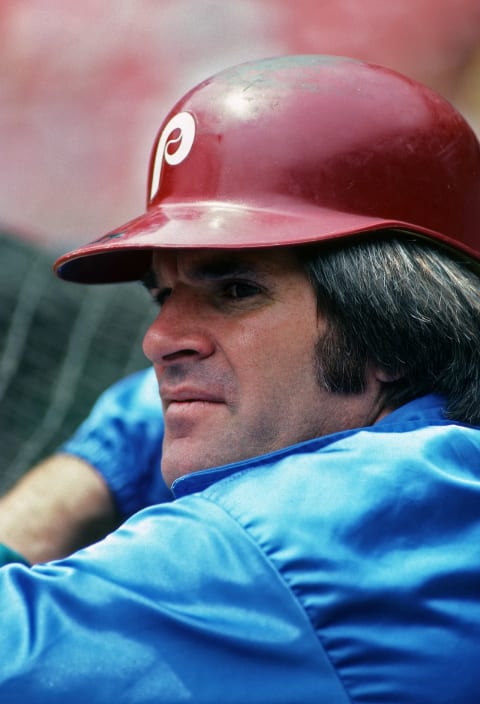
6. Pete Rose, 1979-1983
Pete Rose is best remembered as a Cincinnati Red (and a bettor on baseball who now has a lifetime ban), but nestled among his 24 years in the big leagues was a five-season stint with the Phillies.
Rose joined the Phillies in his age-38 season, which would be considered ancient in today’s game. But Rose, who was coming off six consecutive All-Star seasons, proved he had a lot left in the tank, extending his All-Star streak to 10 years.
During his Phillies tenure, Rose led MLB in games played and hits and led the NL in on-base percentage and doubles. He also won the only Silver Slugger Award of his career.
In 1989, Rose was questioned by the commissioner amid reports that he was betting on baseball, specifically the Reds, whom he managed from 1984-89. Though Rose denied the allegations for months, by August 24, 1989, he voluntarily accepted his lifetime ban from baseball. Doing so was a clear admission of guilt, though Rose continued to deny any wrongdoing until 2004 when he finally admitted to betting on the game and his own team.
Rose is the only person on baseball’s ineligible list by mutual agreement. He has applied for reinstatement several times, but it has never come to pass. He has continued to bet on baseball to this day, though it is, of course, allowed for him as a person on the outside looking in.
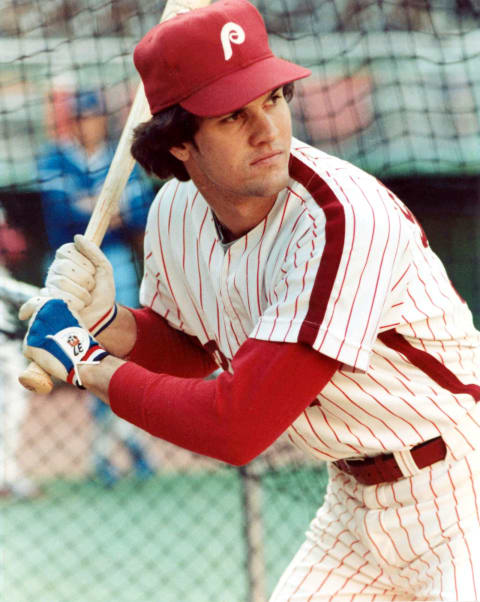
7. Ryne Sandberg, 1981 Phillies
You probably remember Ryne Sandberg as the Phillies manager from 2013-15, but long before that, he was yet another trade regret.
The Phillies drafted Sandberg in the 20th round of the 1978 draft and persuaded him to give up his college football commitment to play baseball. He debuted with the defending-champion Phillies in 1981, playing 13 games for the club.
Dallas Green, who had played for the Phillies during his own big-league career and managed the club from 1979-81, was squired away by the Chicago Cubs after Sandberg’s brief debut season. Green not only left the Phillies, he took quite a few employees with him, including coaches and scouts, and players via trade.
Among the players were Larry Bowa and Sandberg, who, like Fergie Jenkins, would go on to have a Hall of Fame career in Chicago. The infielder had 10 consecutive All-Star seasons and nine Gold Gloves, won NL MVP in 1984, and seven Silver Sluggers, including five in a row between 1988-92.
Out of all the bad trades in franchise history, the Sandberg and Jenkins trades are considered two of the very worst.
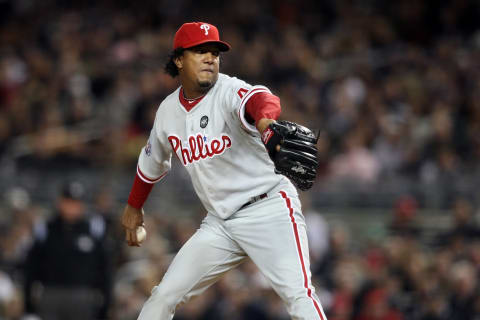
8. Pedro Martinez, 2009 Phillies
Pedro Martinez ending his legendary career with the Phillies still feels… weird. But it happened!
In 2009, the Phillies signed Martinez, who had just spent four seasons with their division-rival Mets. He was coming off a 5.61 ERA season in 2008, but he was also Pedro. He had three Cy Young awards, a pitching Triple Cown, five ERA titles, eight All-Star appearances, and his 2004 Red Sox heroics under his belt. You would’ve signed him, too.
Over nine regular-season starts, Martinez posted a 3.63 ERA. He also pitched in three postseason games for the Phillies, including a stunning NLCS Game 2 in which he threw seven shutout innings. He didn’t fare as well against the Yankees in the World Series, but he’ll always have what he did to them in 2004.

9. Jimmie Foxx, 1945 Phillies
One of the greatest players in early MLB history, Jimmie Foxx is remembered as a Boston Red Sox and then-Philadelphia A’s legend. But he finished his career as a Phillie, which begs the question: are the Phillies the Florida of MLB? Is this where legends come to retire?
Beginning his big-league career at only 17 years old, Foxx spent the first 11 seasons of his 20-year career in Philadelphia as an Athletic. The slugging infielder hit .339/.440/.640 with a 1.079 OPS, and over 1,256 games, amassed 1,492 hits, including 257 doubles, 79 triples, and 302 home runs. He also walked more (781) than he struck out (644).
In 1932 and 1933, Foxx won back-to-back MVP awards and led MLB with 58 and 48 home runs, respectively. But in 1936, cash-strapped A’s owner Connie Mack sold Foxx to the Sox for $150,000. He had another 50+ homer season in 1938 and drove in a career-high, MLB-leading 175 runs. He also led the American League in average, on-base, slugging, OPS, OPS+, and total bases, to win his third MVP award.
In 1942, the Sox sent the 34-year-old Foxx to the Chicago Cubs. He played 70 games for them, and then sat out the 1943 season. After playing just 15 games for the Cubs in 1944, Foxx arrived in Philadelphia in 1945, back where it all began, but not really.
Over 89 games with the Phillies, Foxx hit a respectable .268/.336/.420 with a .756 OPS. His 60 hits included 11 doubles, a triple, and seven home runs. He wasn’t the stellar hitter he’d been in his youth, but it was far from the worst final season we’ve seen from a star player.
Foxx was an All-Star every season between 1933-41, and hit 30+ home runs 12 years in a row, an MLB record at the time. He was the second player in MLB history to hit 500 home runs, and his three MVP awards also set a record.
Foxx is on the Phillies Wall of Fame but as a Philadelphia Athletic. Tom Hanks’ character in A League of Their Own is loosely based on Foxx, who managed in the All-American Girls’ Professional Baseball League in 1952.
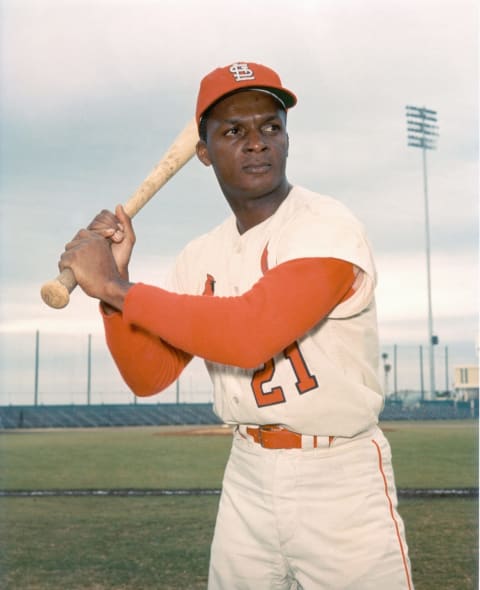
10. Curt Flood, traded to the Phillies in 1969
Curt Flood never played a single game for the Phillies, but we’re including him on the list because his refusal to report to the Phillies set off a chain reaction that resulted in free agency for MLB players.
Flood met with the players’ union to discuss suing MLB for free agency, and when he received their unanimous support, wrote a letter to Commissioner Bowie Kuhn demanding the freedom to select a team of his choosing.
The stellar player knew he’d torpedo his career by taking a stand, and he did it anyway.
light. Trending. 5 Bold predictions for the 2022 Phillies